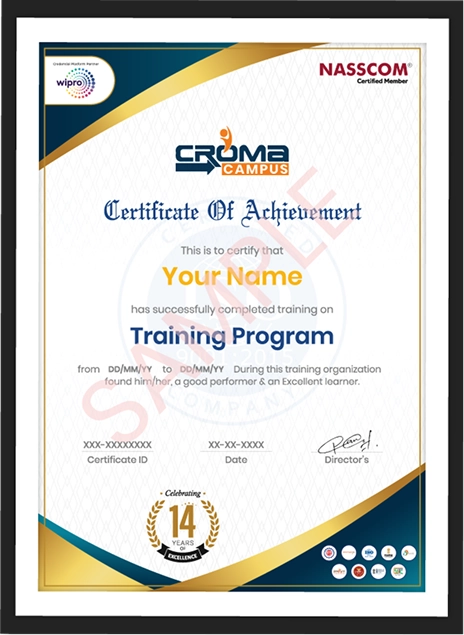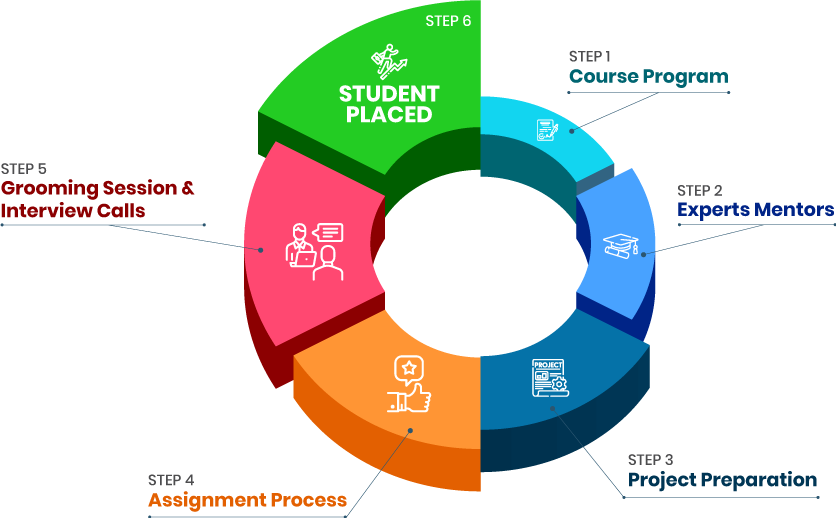Course Design By
Nasscom & Wipro
Right at the beginning of the course, you will be told the basic information concerning this subject.
Further, after learning Java Full Stack Online Training you will receive sessions regarding how to build a wholly functioning web application via a simplistic step from a professional trainer.
Our qualified experts will also help you know about Java server pages, servlets, and JSTL from the basics to the advance.
In fact, you will also end up learning to imply validations on the forms, creating deploy servlets & analyzing the servlet lifecycle.
With Java Full Stack Online Training, you will also accumulate information concerning how to develop dynamic web applications.
You will also receive sessions regarding the Java programming language, concepts related to Generics, MVC in JSP, and adding validations on form data respectively.
To be precise, with Java Full Stack Online Training you will learn every bit of this course in detail.
Right at the initial level of your career, you will earn around Rs. 5.5 Lakhs-Rs. 6.5 Lakhs annually. Well, this structure is quite decent for starters.
Experienced candidates earn up to Rs. 12- Rs. 15.5 Lakhs a year.
By acquiring more work experience, and skills, your salary structure will get better.
After completing the Java Full Stack Development Online Course, you might get some international job offers as well.
By having a licit accreditation of Java Full Stack Developer Course in India in hand, you will turn into a skilled Java Full Stack Developer.
Further, by acquiring more work experience in this field, you can turn into a Technical Lead or a Product Manager.
Withholding a certified accreditation in hand, you will also be offered a better salary package.
Further, in your career, you can also turn into a freelancer, and earn even more additional income.
You will acquire in-depth information concerning HTML and CSS.
Your knowledge will get uplifted regarding JavaScript.
You will have experience working with Git, PHP, Python, Java, and Ruby.
You will grab a higher salary package.
Accumulate some hidden facts about the Java Full Stack Development Online Training respectively.
You will get international job offers as well.
Your foremost duty will be to work accordingly with development teams and product managers to ideate software solutions.
You will also have to design client-side and server-side architecture.
Working as a Full Stack Java Developer will indulge you in the developing front-end of applications through appealing visual design.
Building, and managing well-functioning databases and applications will also be counted among your main job role.
You will also have to assure responsiveness and efficiency.
Debugging, troubleshooting, and upgrading the software will also be counted as your main role.
Developing features and applications with a mobile responsive design will also be counted as your main role.
You will also have to compose technical documentation.
we train you to get hired.

By registering here, I agree to Croma Campus Terms & Conditions and Privacy Policy
+ More Lessons
Course Design By

Nasscom & Wipro
Course Offered By

Croma Campus

Stories
success
inspiration


career upgrad


career upgrad


career upgrad


career upgrad
12-Jul-2025*
14-Jul-2025*
09-Jul-2025*
12-Jul-2025*
14-Jul-2025*
09-Jul-2025*

You will get certificate after
completion of program

You will get certificate after
completion of program

You will get certificate after
completion of program
in Collaboration with






Empowering Learning Through Real Experiences and Innovation

we train you to get hired.

Phone (For Voice Call):
+91-971 152 6942WhatsApp (For Call & Chat):
+91-971 152 6942Get a peek through the entire curriculum designed that ensures Placement Guidance
Course Design By


Course Offered By

Ready to streamline Your Process? Submit Your batch request today!
This specific course is not a lengthy one and will take 50-60 days to understand its functionalities.
Here, along with informative information, you will also get 100% placement assurance.
Here, training is given via two methods online/offline. You can choose either one at your convenience.

FOR QUERIES, FEEDBACK OR ASSISTANCE
Best of support with us
For Voice Call
+91-971 152 6942For Whatsapp Call & Chat
+91-9711526942